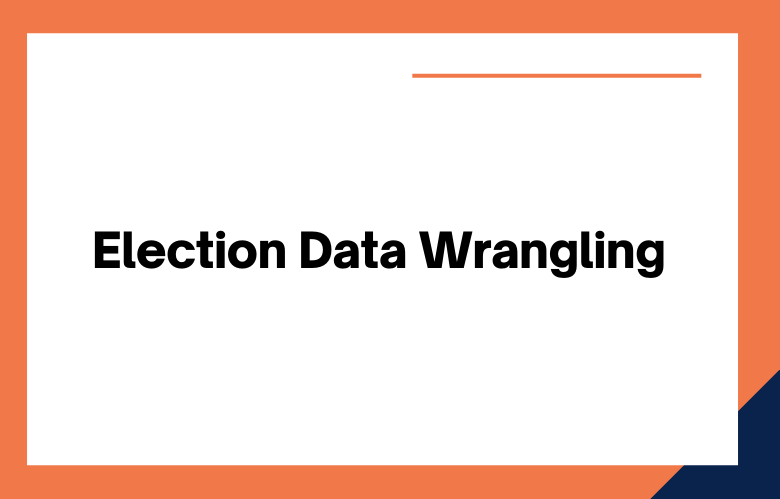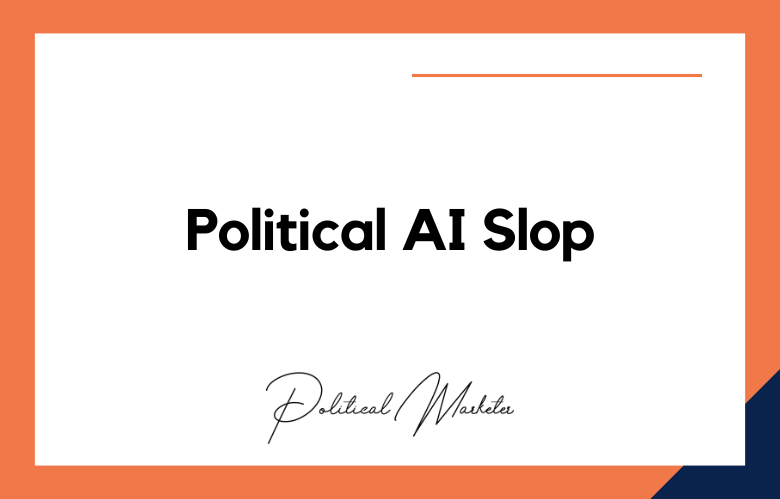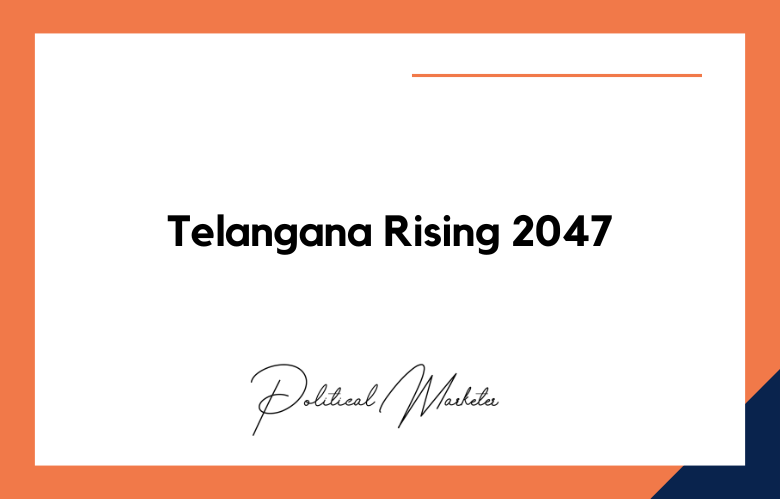It’s no secret that election season is in full swing. As the voting populace prepares to head to the polls, pundits and pollsters are crunching numbers and analyzing data.
We’ll look at some techniques used to wrangle election and polling data. We’ll also explore how this data can glean insights into public opinion.
How do you analyze election and polling data? We’ll show you how to wrangle and analyze election data using the tidyverse package in R.
What is Election Data Wrangling?
Election data wrangling is the process of preparing electoral data for analysis. This can involve cleaning and standardizing the data and converting it into a suitable format for analytical tools. Elections are complex phenomena, and data wrangling is essential to produce accurate and meaningful results.
Election data wrangling is cleaning and structuring raw data for political purposes.
This process can involve everything from identifying and fixing errors in the data to organizing it to simplify the analysis.
Data wrangling is essential in any political campaign; those skilled at it can give their candidates a significant advantage.
Election data wrangling is cleaning and preparing election data for analysis.
Election data wrangling is a critical step in ensuring accurate election results.
Without proper data wrangling, election results can be compromised.
There’s more to elections than just votes. There’s also the data that makes sure those votes are counted accurately. And that’s where election data-wrangling comes in.
Election data wrangling is data cleansing, organizing, and formatting data to be used effectively in election planning and administration. Cleaning data involves removing errors, inconsistencies, and duplicates. Organizing data means putting it into a structure that is easy to use and understand. Formatting data ensures that it is compatible with the systems and software.
-
Data Collection: Election data is gathered from various sources, such as government websites, news outlets, and social media.
-
Data Cleaning: The data is cleaned to remove errors, inconsistencies, or incomplete information.
-
Data Formatting: The data is formatted to ensure consistency and compatibility with analysis tools.
-
Data Standardization: Data fields are standardized for easy comparison and analysis across different datasets.
-
Data Consolidation: Multiple datasets are consolidated to create a comprehensive view of the election.
-
Data Exploration: The wrangled data is explored to identify patterns, trends, and correlations that can inform election analysis.
-
Data Visualization: The data is visualized using charts, graphs, and maps to aid in analyzing and communicating insights.
-
Data Publishing: The wrangled data is published in a standardized format to enable sharing and reuse by other researchers and analysts.
In other words, data wrangling ensures the data used in elections are accurate, reliable, and usable. It’s a crucial
How to wrangle and analyze election data using the tidyverse package in R
This package offers tools for data manipulation, analysis, and visualization. You can easily import, clean, and summarize election data with it.
To wrangle and analyze election data using the tidyverse package in R, follow these steps:
- Load the tidyverse package into R.
- Use the reader box to load your election data into R.
- Use the dplyr box to manipulate your data as needed.
- Use the ggplot2 box to create visualizations of your data.
The tidyverse package in R is an excellent tool for wrangling and analyzing election data. With its wide range of functions, you can easily manipulate data to create insightful visualizations. No matter your data analysis goals, the tidyverse package can help you achieve them.
This package provides a streamlined way to manage and process election data. It can help you clean, filter, and summarize large data sets quickly and easily.
Wranglin’ election data got a lot easier thanks to the tidyverse package in R. Now, it’s a snap to analyze all that data and make informed decisions about who to vote for.
How to Analyze Election and Polling Data
Analyzing election and polling data can be a complex task. However, some key things to look for can give you a good idea of where the election is heading.
The difference between the poll results and the actual election results can give you a good idea of where the election is heading.
Start by looking at the big picture. Take a look at the trend lines for each candidate throughout the campaign. Try to identify any patterns or outliers.
Next, zoom in on specific precincts or districts. Look at how each candidate performed in different areas. This can give you insights into what issues matter most to voters in those areas.
Whether you’re trying to understand the latest presidential election results or figure out how a candidate is likely to do in the primaries, analyzing election and polling data can be tricky.
-
Choose your data sources: Select reputable sources for election and polling data, such as government websites, respected news outlets, or academic research.
-
Clean and organize your data: Ensure your data is clean and organized in a consistent format. This may involve removing duplicates, correcting errors, and standardizing data fields.
-
Identify critical variables: Determine the variables you want to analyze, such as voter demographics, candidate positions, or polling numbers.
-
Explore the data: Explore your data to understand its distribution, relationships between variables, and any outliers or unusual observations.
-
Choose your analysis methods: Select appropriate statistical methods to analyze your data, such as descriptive statistics, correlations, or regression analysis.
-
Perform the analysis: Carry out your chosen analysis methods using statistical software or programming languages like R or Python.
-
Interpret the results: Interpret the results of your analysis and look for patterns, trends, or relationships between variables.
-
Visualize the data: Use data visualization techniques like charts, graphs, or maps to communicate your findings clearly and effectively.
-
Draw conclusions: Draw conclusions based on your analysis and consider the implications for election outcomes or future campaigns.
-
Communicate your findings: Share them with relevant stakeholders or publish them in academic journals or news outlets.
Here are a few tips on how to get started
Are there any patterns that stand out?
Next, zoom in and look at the details. How do different demographics respond to other candidates? What issues are most important to voters?
Finally, don’t forget to double-check your work.
To analyze election and polling data, follow these steps. First, data will be collected from various sources, including news outlets, government agencies, and private companies. Next, sift through the data to find trends and patterns. Finally, this information can be used to predict future elections and understand the factors influencing voting behavior.
There are a few steps that one must take to understand election and polling data.
First, it is essential to familiarize oneself with the different available data types.
This can be done by reading relevant articles or watching videos on the subject.
By analyzing the data, one can better understand how elections work and what factors influence election results.
To understand election and polling data, you must first know how to analyze it. By understanding these factors, you can get a clear picture of what the data means and how it can be used to predict election outcomes.
Best Practices for Analyze Election and Polling Data
- Filter and clean the data to remove errors
- Perform exploratory data analysis to identify patterns
- Conclude from the data
- Share your findings with others
- Collect and analyze polling data to understand public opinion on critical issues.
- Compare poll results to election results to understand voting patterns
- Use data analysis to predict the outcomes of future elections
- Analyze how different demographics respond to polls
- Interpret trends in polling data over time
- Understand the types of data and how they are used
- Evaluate poll results
- Analyze voting patterns
- Use data to predict outcomes
- Filter data to remove bias
- Analyze the data to understand what it means
- Conclude from the data
- Publish findings
- Filter the data to remove any outliers or errors
- Compare the results of different polls to identify trends
- Use regression analysis to determine how other factors impact voting behavior
- Make predictions about future election outcomes
- When analyzing election or polling data, always use the most recent data available.
- Compare different data types to get a more accurate picture of what’s happening.
- Look at both the national and state-level data to get a better understanding of the trends.
- Use different types of graphs and charts to help you visualize the data
- Try to find patterns in the data
- Ask questions about the data and try to answer them
- Share your findings with others
- Collect and analyze polling data from reliable sources
- Identify the most critical factors affecting the election
- Compare different types of polling data to get a more accurate picture of public opinion
- Use statistical analysis to identify trends in the data
- Interpret the data to understand what it means for the election
- Share your findings with others
- Collect and analyze polling data in a systematic way
- Understand the various types of polling data
- Use historical polling data to make predictions about future elections
- Evaluate the accuracy of polls and pollsters
- Use polling data to understand public opinion on critical issues.
Conclusion
Election data wrangling is a process of analyzing election and polling data. It can be used to understand voting behavior, predict outcomes, and more. Contact us if you want to learn this process or need help with your analysis.
We offer election data-wrangling consulting to help you get the most out of your data.
One way to get in touch is by filling out our online form on this site or give us a call at
+91 9848321284. Let’s work together today!
Call: +91 9848321284
Email: [email protected]











